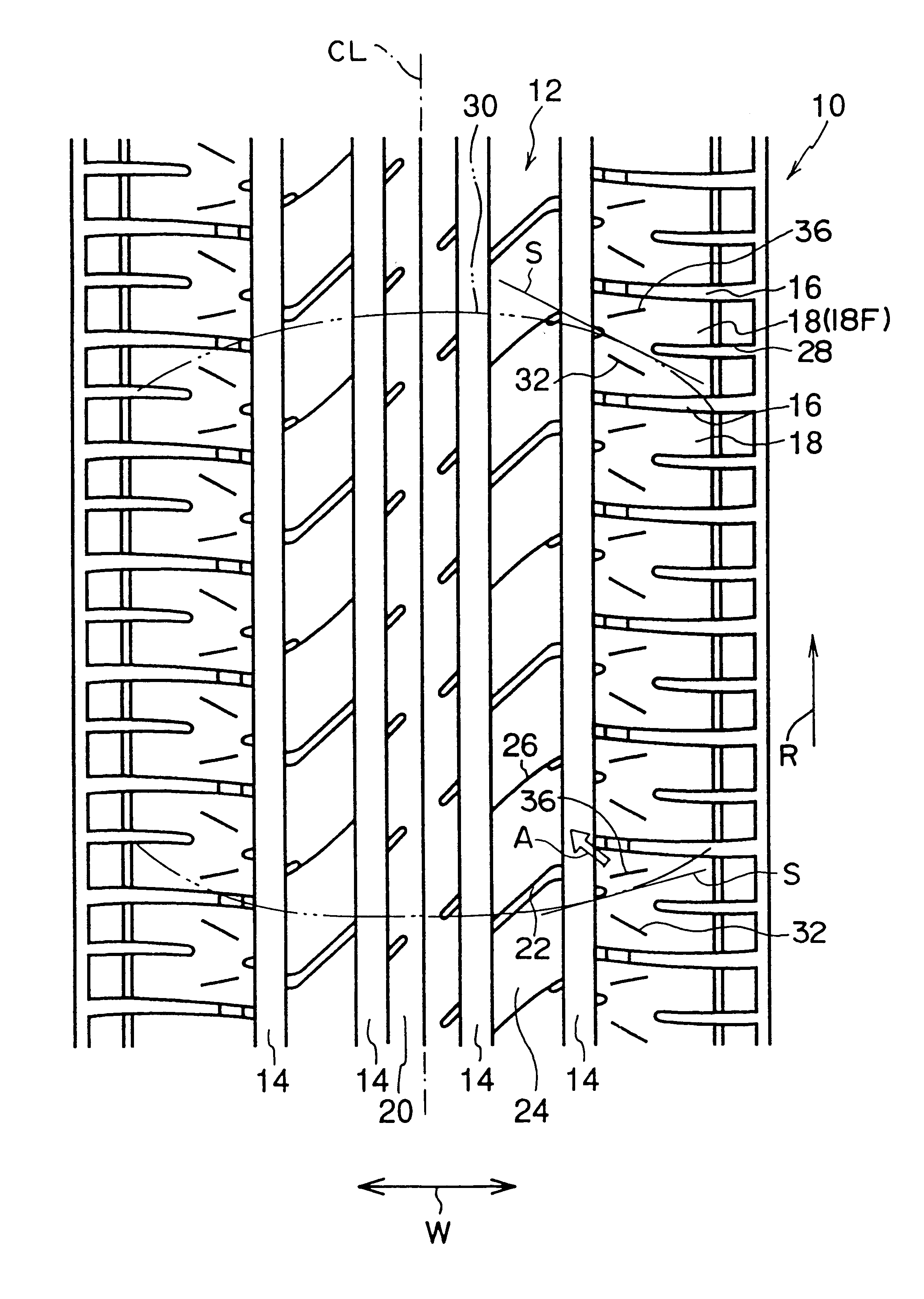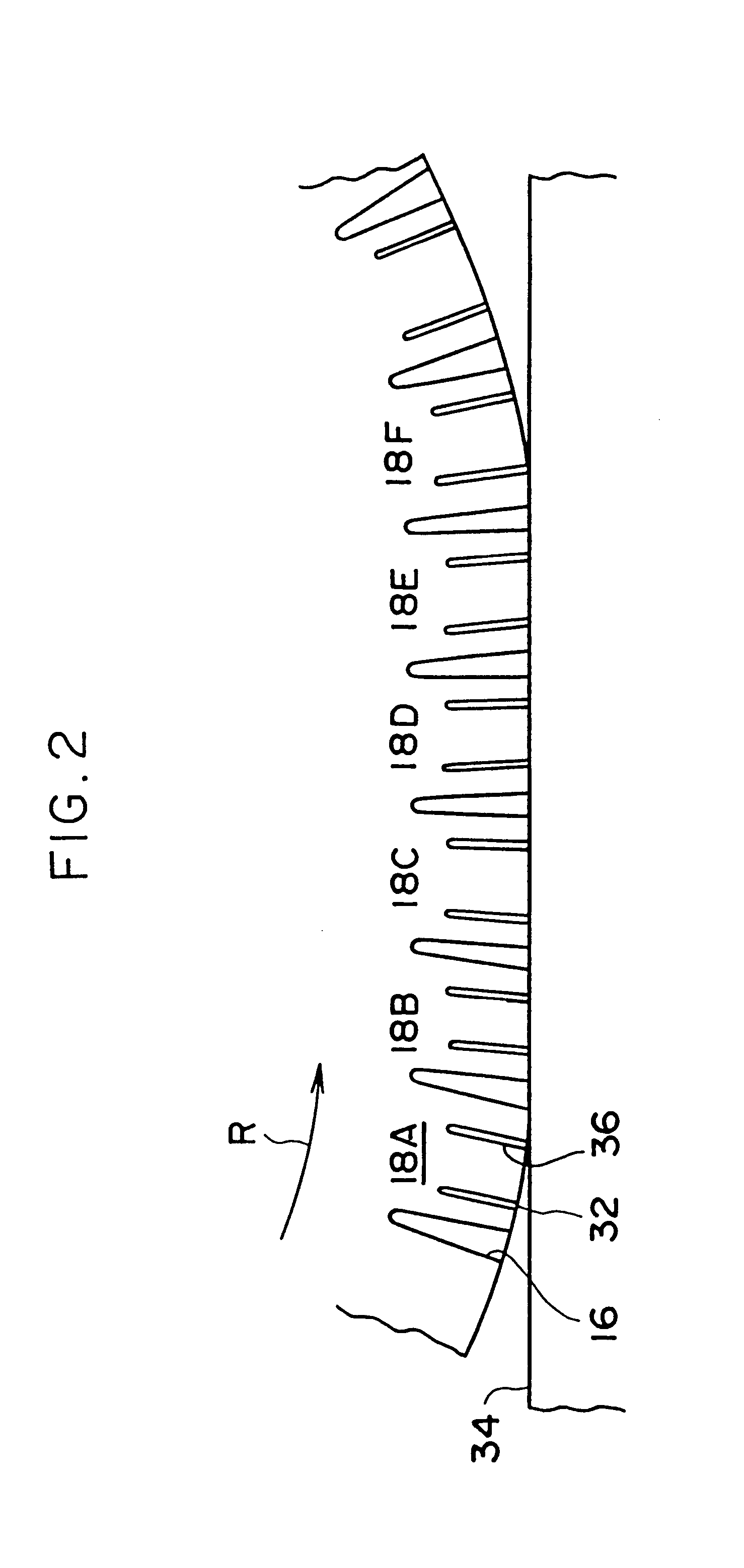Pneumatic tire including sipes
a technology of pneumatic tires and sipes, applied in the field of pneumatic tires, can solve the problems of deterioration of external appearance and noise, steps due, and tend to occur
- Summary
- Abstract
- Description
- Claims
- Application Information
AI Technical Summary
Benefits of technology
Problems solved by technology
Method used
Image
Examples
example tire 1
The tire of the first embodiment (see FIG. 1).
Conventional Example Tire 1:
The same pattern as that of Example Tire 1, but sipes were not formed in any of the blocks.
example tire 2
As shown in FIG. 7, the pattern was the same as that of Example Tire 3, but only the sipes 48 at the trailing edge regions were formed in the shoulder blocks 42.
example tire 3
The tire of the second embodiment (see FIG. 5).
Conventional Example Tire 2:
As shown in FIG. 8, the pattern was the same as that of Example Tires 2, 3, but no sipes were formed in the blocks.
(Experimental Method)
The wear test was carried out by a flat belt wear testing machine at which the experimental tire was mounted to a 7.5 J rim and filled to an internal pressure of 2.0 kgf / cm.sup.2. The experimental conditions were as follows.
road surface: Safety Walk type B (trade name, manufactured by 3M Co., Ltd.)
slip angle: 0.5 degrees
load braking force: 45 kgf
running distance: 300 km
room temperature: 30.degree. C.
load: 450 kgf
speed: 50 km / h
In the evaluation of the comparison, of the fires the difference in the amount of wear between the trailing edge and the leading edge of the block at the shoulder side was expressed as an index with the Conventional Example Tire being 100. Higher values indicate smaller wear differences which is better. The results are shown in following Tables 1 and 2.
T...
PUM
 Login to View More
Login to View More Abstract
Description
Claims
Application Information
 Login to View More
Login to View More - R&D
- Intellectual Property
- Life Sciences
- Materials
- Tech Scout
- Unparalleled Data Quality
- Higher Quality Content
- 60% Fewer Hallucinations
Browse by: Latest US Patents, China's latest patents, Technical Efficacy Thesaurus, Application Domain, Technology Topic, Popular Technical Reports.
© 2025 PatSnap. All rights reserved.Legal|Privacy policy|Modern Slavery Act Transparency Statement|Sitemap|About US| Contact US: help@patsnap.com



